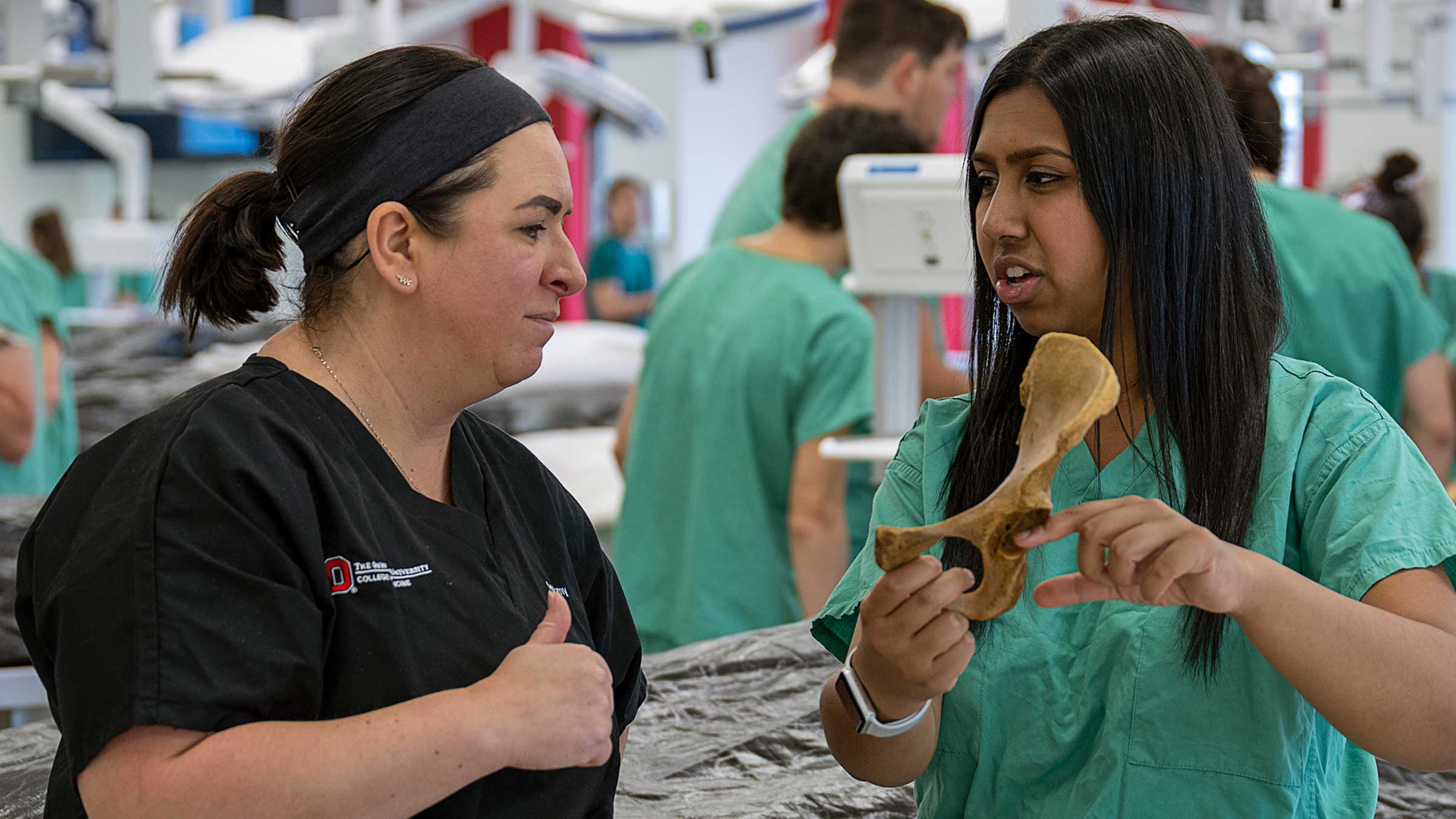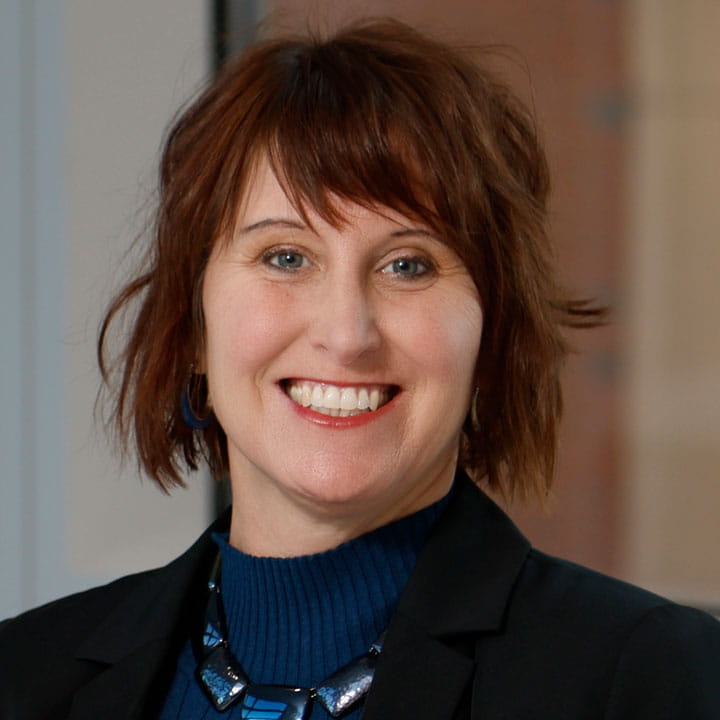Professor’s transformative approach to teaching anatomy
Melissa Quinn, PhD, creates meaningful connections to build her students’ odds of success.
Melissa Quinn, PhD, knows that anatomy is the foundation of medicine. If students start off with a strong foothold in anatomy, it can benefit their entire medical school experience. That’s why Dr. Quinn prioritizes getting to know learners in meaningful ways — her approach is to meet them where they are using humility, humor and a hands-on approach.
“There’s a reason we call her the queen,” says third-year medical student Brad Loomis.
In his experience, Dr. Quinn, a clinical associate professor in the Division of Anatomy at The Ohio State University College of Medicine, connects exceptionally well with students, making it clear that she deeply cares about each one and their successes.
“She’s able to teach some of the most conceptually challenging anatomy topics in a way that just makes so much sense,” Loomis says.
“Her splitting classes into smaller groups during our dissection of a cadaver helps us learn by participating very actively in the process.”
Connecting with students as they discover the connections of human anatomy
Dr. Quinn’s ability to help learners make sense of structures, functions and the complex web of veins, arteries, organs and muscles in the body offers an engaging approach.
“Anatomy is a whole new language they’re learning,” Dr. Quinn says. “Our lab allows the students to work through this language with our amazing team, our donors (those who’ve donated their bodies to medical study) and our technology that immerses them in that space.”
 The newly built anatomy wing of the Interdisciplinary Health Sciences Center serves as a hub for Dr. Quinn and others teaching anatomy. The expanse covers 43,500 square-feet, has six rooms where students conduct dissections and space for more than 300 body donors.
The newly built anatomy wing of the Interdisciplinary Health Sciences Center serves as a hub for Dr. Quinn and others teaching anatomy. The expanse covers 43,500 square-feet, has six rooms where students conduct dissections and space for more than 300 body donors.
Each table is equipped with surgical lighting, an iPad station and practical interactive tools, like high-tech microscopes and ultrasound, to view inside the body. Learners also have access to a virtual reality platform that they can access from anywhere at any time.
“They get to see first-hand how technological advances have created many new and exciting opportunities to help them retain what they’re learning so they will be able to apply the knowledge when they move into diagnosing and treating patients,” Dr. Quinn says.
Using multiple approaches to reinforce learning
Dr. Quinn conducts research on developing and evaluating innovative approaches in teaching the anatomical sciences. She’s developed a deeper understanding of the thinking process, which has affirmed her instinct that not every student learns the same way. That’s why she delivers sections of content in multiple ways, including visually, orally and engaging students in leading-edge learning activities.
Often, that includes integrating new technology, like the Sectra Table, into her anatomy lessons. Dr. Quinn likens the table to it being like a giant iPad that allows learners to interact with vivid 3D models of the human body from multiple perspectives and in high detail.
The Sectra Table creates digitized versions of the anatomical donations from the college’s Body Donation Program. This increases the length of the use of the valuable anatomical donations for education and research for the advancement of medical science and health initiatives.
“Exploring new ways of learning helps ensure that when learners are exposed to new information, they can build on their existing knowledge,” Dr. Quinn says. “It also creates a personal experience for learners.”
For Loomis, his experiences with Dr. Quinn led him to engage with the anatomy department in extracurricular ways. He works as a peer anatomy tutor for first and second-year medical students and is a part of Ohio State’s Anatomy Outreach Team.
“Her classes are very fair,” Loomis says. “The practicals are difficult, but if you use all the lab time and resources available, you will do well.”

Leading students to the next step in their education
Dr. Quinn believes being in education is more than just helping learners master academics and build foundational knowledge. She says it’s the distinct privilege of helping learners develop their sense of self.
“By instilling kindness and empathy, we can help them along their path and teach them the importance of showing up for each other,” Dr. Quinn says, “I believe it’s essential that my approach is tailored to the specific learning needs of each student.”
That way, she can appropriately support and challenge them academically and push them to be better in all aspects of their lives.
“We’re nurturing the next generation of health care professionals and educators,” Dr. Quinn says. “And providing them with the training that will lead them to their next step.”






